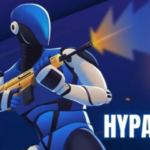Introduction
When you search “Mike Wolfe passion project,” you’re not just stumbling on celebrity gossip—you’re tapping into a genuine mission. Beyond American Pickers, Mike Wolfe quietly undertakes what many would call a labor of love: restoring historic structures, resurrecting Main Street energy, and weaving stories from everyday Americana. From revitalizing a 1940s Esso station to transforming a vintage dealership into a community hub, his work blends preservation, storytelling, and local renewal into one living canvas.
This article dives deep into that passion project—what drives it, how it works, notable examples, how you can start one in your community, and common questions people ask.
What Does “Passion Project” Mean for Mike Wolfe?
In Mike Wolfe’s case, “passion project” doesn’t mean a side hobby—it signifies a holistic, long-term investment in place, memory, and creativity. His projects draw from three core themes:
- Preservation — of buildings, artifacts, and local heritage
- Storytelling — sharing narratives through media and events
- Community activation — bringing people together in renewed public spaces
These efforts complement the pick-and-restore model familiar from American Pickers, but focus more on architecture, districts, and collective identity than on individual antiques.
Key Elements of the Passion Project
Preservation: Buildings & Artifacts
- Adaptive reuse: rather than demolish, Mike rescues buildings and gives them new life. Two of his flagship efforts in Columbia, Tennessee, revolve around reimagining sites like a 1947 Chevrolet dealership and a period Esso gas station.
- Curated artifacts: his experience with antique hunting gives him insight into how to preserve, display, and contextualize objects so they tell stories—not just sit on shelves.
Storytelling & Platform Building
- Two Lanes: Mike’s storytelling + commerce platform. It highlights artisans, road trips, the beauty of small towns, and historically rooted craftsmanship. The goal is to connect everyday folk with creators and stories behind the scenes.
- He uses social media, blogs, and photography to bring followers along—showing before/after photos, backstage work, and community voices.
Community & Local Impact
- His restored spaces often host pop-up markets, makers’ events, art exhibits, car shows, etc., drawing foot traffic back to downtowns.
- By resurrecting historic structures, he helps revitalize corridors that had declined, creating momentum for nearby businesses and inspiring local pride.
Signature Projects: Where Vision Meets Reality
Columbia Motor Alley (The 1947 Chevrolet Dealership)
- Mike acquired a vintage Chevrolet dealership building in Columbia and reimagined it as a vehicle showcase, event venue, and historical anchor.
- The idea is to preserve automotive heritage while making the space active again—a place where locals and visitors gather.
- It embodies Mike’s philosophy: not just saving a building, but making it relevant and alive.
The 1940s Esso Station Restoration
- In downtown Columbia, another key project is restoring or repurposing a mid-century Esso service station.
- The plan isn’t just to restore for show—it’s to convert it into a gathering place, courtyard, or design object that enhances the public realm.
- It proves that even small corners, thoughtfully handled, can shift how people use and perceive a street block.
How Two Lanes Bridges the Gap?
Two Lanes is more than a store—it’s a narrative portal:
- It curates goods tied to the project’s ethos—tools, print, artisan work, road-trip gear.
- It publishes essays, photo stories, and interviews that highlight small towns, makers, road culture, and historic places.
- By aligning consumer products with meaning and narrative, Two Lanes helps fund, promote, and expand the passion projects into cultural reach.
How You Can Start a “Passion Project” in Your Town
If you’re inspired and want to try something similar, here’s a step-by-step road map.
Identify a site with promise.
Look for a visible, underused building (gas station, corner lot, old storefront) that has character and story.
Research history & zoning
Collect old photos, land records, and meet with local planning or historic preservation commissions.
Plan an interim activation.
Even before complete restoration, host a pop-up, art show, or open day—get people in the space.
Recruit makers & designers.
Collaborate with local craftsmen or artisans to contribute to restoration and build buy-in.
Preserve key elements while adding function.
Maintain vintage signage, facades, and materials when possible; add modern systems discretely.
Document the journey
Publish before/after, share stories of donors, neighborhood voices. Transparency builds support.
Program events & invite the public
Use community events, food trucks, and music nights to sustain momentum between construction phases.
Think district, not just building.
Work with neighboring property owners and business associations to create a larger area revitalization.
With these steps, small memory-laden corners may become community magnets.
Impact, Challenges & Lessons Learned
Positive Outcomes
- Economic ripple effects: Restoration often attracts tenants, visitors, and new businesses.
- Cultural meaning: Preserving local identity resists “placelessness” and keeps heritage alive.
- Catalyst for conversation: Such projects inspire other property owners to maintain their buildings.
Challenges to Expect
- Code & permit hurdles: Unexpected infrastructure or compliance demands can delay restoration.
- Funding & phasing: Big projects often must be segmented, with early activations to show progress.
- Local resistance & perception: Some community members may question scale, cost, or intent—early communication is key.
Lessons Learned
- Launch with small but visible wins to build trust.
- Use transparent storytelling—people stay invested when they see progress.
- Engage local partners and commissions early to avoid surprise roadblocks.
- Don’t treat the work as “done”—ongoing programming keeps the space alive.
What’s Next: Expansions & Media Tie-Ins
While the core work continues in Colombia, Mike Wolfe is also pushing into new media territory. After recovering from a serious car crash, he announced a new show on the History Channel, History’s Greatest Picks With Mike Wolfe, which promises to focus on legendary artifacts, legends, and preservation stories. This show’s mission aligns directly with his passion project ethos: turning objects and places into stories.
FAQs
What exactly is Mike Wolfe’s passion project?
It’s a long-term effort to restore historic buildings, activate local districts, and use storytelling to connect people with overlooked heritage—primarily through Columbia, Tennessee projects.
Is it part of American Pickers?
It’s separate but complementary. The same values—finding, restoring, interpreting—are at play, but the passion project focuses more on places than individual collectibles.
What kinds of buildings?
Typically, vintage storefronts, gas stations, auto-related structures, or underused historic properties with street presence and character.
How is it funded?
Public information suggests a mix: private investment, sales through Two Lanes, event revenue, and possibly grants or partnerships. The storytelling commerce model helps undergird funding.
Why Columbia, Tennessee?
Columbia offers a mix of mid-century automotive history, underutilized downtown parcels, and community openness to revitalization projects.
Can I replicate this in my town?
Yes—start small, build community, tell the story, and maintain authenticity. Use the step-by-step plan above.
Where to follow updates?
Check Antique Archaeology (for Motor Alley and Two Lanes pages) and Mike Wolfe’s social media for build updates, event announcements, and behind-the-scenes stories.
Key Takeaways
- Mike Wolfe’s passion project is rooted in preservation, storytelling, and community activation.
- Significant efforts include Columbia Motor Alley (vintage car dealership turned event hub) and the 1940s Esso station restoration.
- Two Lanes bridges passion and audience through narrative, commerce, and maker networks.
- You can replicate aspects locally by picking manageable sites, engaging locals, and telling the journey.
- Real impact comes from sequenced wins, transparency, and programming to keep spaces alive.
- Media extensions like History’s Greatest Picks show how storytelling fuels broader attention and support





